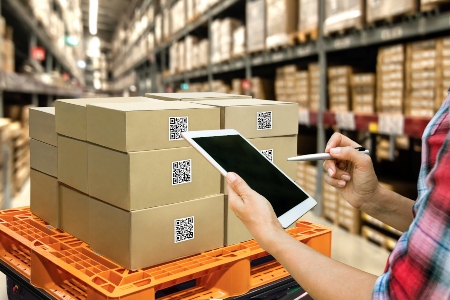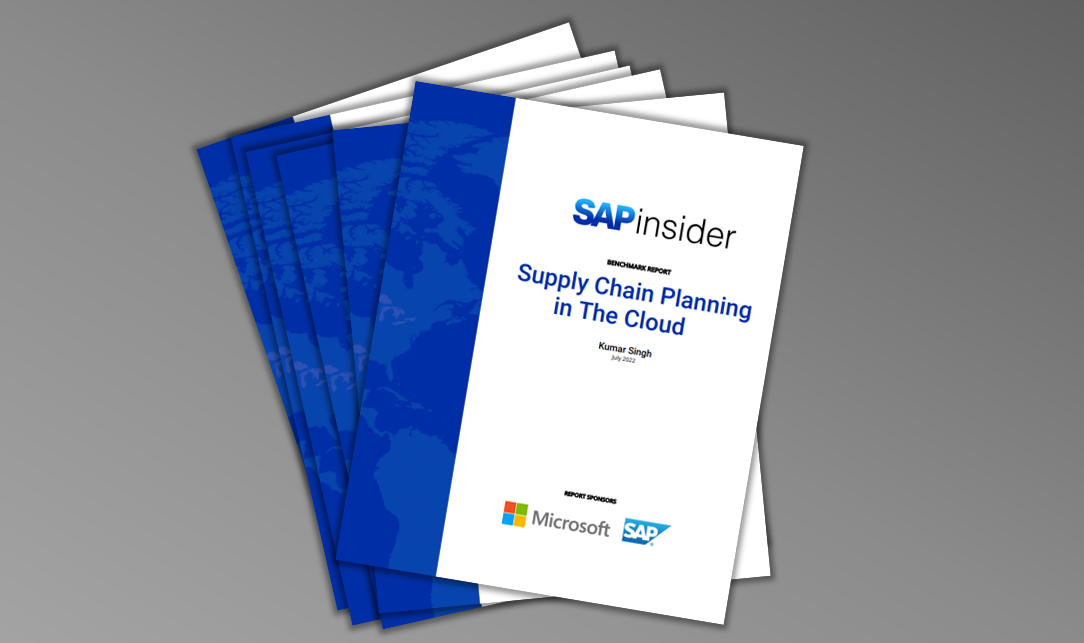Connecting All Parts of the Supply Chain
How SAP S/4HANA and SAP’s Digital Supply Chain Solutions Leverage Data Throughout the Organization
The supply chain has traditionally revolved around enterprises’ core ERP systems, supported by siloed applications that provide additional, more advanced functionality around transportation management, production planning, or warehouse management, for example. This approach served manufacturers well for years, but with today’s market trends — from e-commerce and omnichannel upending retail to technology innovations such as robotics, smart products, and intelligent machines — it’s no longer sufficient. In-memory computing and modern cloud architectures have eliminated the technical constraints of the past that necessitated this siloed approach and opened the door to a new suite of integrated in-memory enterprise applications.
With the 1610 release of SAP S/4HANA, companies now have access to a modular suite of integrated solutions that include advanced supply chain capabilities that used to require separate, disparate installations. This simplified landscape allows new companies to explore brand-new functionality, and helps long-standing manufacturers gain the flexibility and visibility needed to take advantage of use cases that were previously out of reach.
The articles in this special report provide an in-depth analysis of some key new innovations delivered with the 1610 release of SAP S/4HANA in the areas of warehouse management, production planning, and order promising, all of which are critical for supply chain and manufacturing executives looking to digitize their supply chains. Taken alone, these innovations are a leap forward in the journey toward digitization. However, when incorporated as part of a landscape that includes an SAP S/4HANA digital core working together with other digital supply chain solutions and related offerings — such as SAP Leonardo, SAP Integrated Business Planning, SAP Ariba, and SAP Hybris — the benefits are magnified. By deploying SAP S/4HANA alongside these solutions, companies can achieve faster, more accurate planning cycles, dynamic sourcing and procurement processes, and a simplified logistics data model that enables an omnichannel strategy, ensuring a competitive advantage in an increasingly crowded marketplace. Let’s look at some examples of how these solutions can work together to enable a digital supply chain.
Synchronizing Demand Planning with Fulfillment Execution
SAP S/4HANA leverages a single logistics data model across manufacturing, inventory, sales, and the material ledger — an innovation that simplifies data consumption and enables better integration. Incoming sales order and financial data in SAP S/4HANA can be seamlessly rolled up into SAP Integrated Business Planning, which improves planning, forecasting, and what-if simulation analysis. This simpler setup eliminates the complicated integrations across siloed solutions required in the past, and users no longer have to struggle with spreadsheets and batch processing to get the information they need.
Downstream material requirements planning (MRP), production planning, and order fulfillment are also improved in SAP S/4HANA, because the close integration with SAP Integrated Business Planning allows forecast plans for sales and operations planning (S&OP) and demand planning to be used downstream. This reduces the time between receiving a customer order and making a final delivery, and frees up resources to better respond to sudden shifts in customer demand.
Enhancing Digital Supply Chain Visibility with the Internet of Things
The Internet of Things (IoT) is a major technological breakthrough in the supply chain space, providing real-time data around everything from machine part wear and tear to package tracking and weather conditions. SAP Leonardo is SAP’s IoT strategy and solution portfolio that integrates into the SAP S/4HANA value chain from engineering to delivery, providing companies with data across devices, applications, and assets as well as the vision to act on it.
SAP Leonardo working together with SAP S/4HANA tracks everything from cold-chain condition tracking — temperature points along critical points in the supply chain for perishable goods, such as ice cream or vegetables — to detailed component traceability, so life sciences companies can carefully monitor all elements of the supply chain to avoid contamination of a pharmaceutical or chemical. This functionality also helps logistics organizations track packages and delivery processes, benefits they can then extend to their customers with end-to-end visibility.
In addition to tracking processes, SAP Leonardo allows companies to monitor their IoT-connected devices by making digital twins of machines developed for manufacturing use. By embedding sensors, companies can re-create in the solution a visual image of each asset and properly monitor its state and condition in real time to determine if it needs maintenance or is over capacity, for example. In many cases, the digital twin will have a longer lifespan than its physical counterpart, enabling companies to not only perform preventive maintenance and optimize use of the asset, but also understand how future assets can be improved. This is an important benefit for manufacturers that have changed from operating as machine providers to becoming service providers — if they can innovate machines that they sell to customers as a service, they can gain greater efficiencies and revenue by running these machines optimally.
Providing Real-Time Forecast Changes to Suppliers
Speed is critical to establishing a stable and fast supply chain. Traditionally, supply chain changes — particularly around suppliers — have involved manual communication that is too slow and error prone, affecting the ability to respond to demand fluctuation. By deploying SAP S/4HANA together with Ariba Network, back-end systems are connected directly to the digital systems of supply chain partners, allowing enterprises to quickly react to market disruptions in real time. If a new product launch is seeing unexpectedly high demand, for example, suppliers can learn this more quickly through manufacturers and retailers and adjust their production schedule to meet the new forecasted demand.
Integration between Ariba Network and SAP S/4HANA also benefits members of the finance team, including treasury and accounts payable, through dynamic discounting. Ariba Network allows these users to have real-time views into the payment terms and supplier contracts throughout their supply chain network, enabling them to identify situations where early payment could provide discounts to the company, whether they are using their own funds or capabilities provided within SAP Ariba Financial Supply Chain. Dynamic discounting capitalizes on real-time information to improve the visibility of the finance organization and give a short-term benefit to working capital and liquidity.
Bringing Omnichannel to Retail and CPG Companies
When it comes to retail and consumer packaged goods (CPG), it’s not enough to consider only the individual parts of a company’s internal supply chain. In today’s competitive marketplace, customers have more power than ever, and it’s essential that companies have a complete view to deliver the best service at every touchpoint on every channel. SAP S/4HANA and SAP Hybris solutions together can provide the functionality required to do just that, enabling employees from across the organization — whether in sales, finance, customer service, or in the warehouse — to have the information they need at their fingertips.
SAP Hybris Marketing Cloud leverages customer data from SAP S/4HANA to help marketers better segment and target their audience. The solution captures leads during a campaign and shares that data with SAP Hybris Cloud for Sales so salespeople can follow up on the leads using the complete set of customer data from SAP S/4HANA. The same principle is true for customers placing orders: Data from SAP S/4HANA is immediately available within order management and warehouse management components, enabling better shipping and billing processes.
Digitizing the Supply Chain
The supply chain and manufacturing are under increasing pressure to deliver faster, better, and smarter to keep up with new market and technology trends. By using SAP S/4HANA with SAP’s digital supply chain solutions, companies can better leverage their data to tackle today’s most difficult business challenges and harness technological innovations. Due to the in-memory computing power of SAP HANA and the simplified data model of SAP S/4HANA, technical capabilities throughout the supply chain are more easily available to companies than ever before. And with the delivery of the 1610 release of SAP S/4HANA, advanced supply chain and manufacturing solutions are being integrated back into the core, eliminating complex integration layers that reduce insights and hamper productivity. This report will explain in more detail how these solutions enable new use cases and improve the effectiveness of supply chain operations for the digital age.





